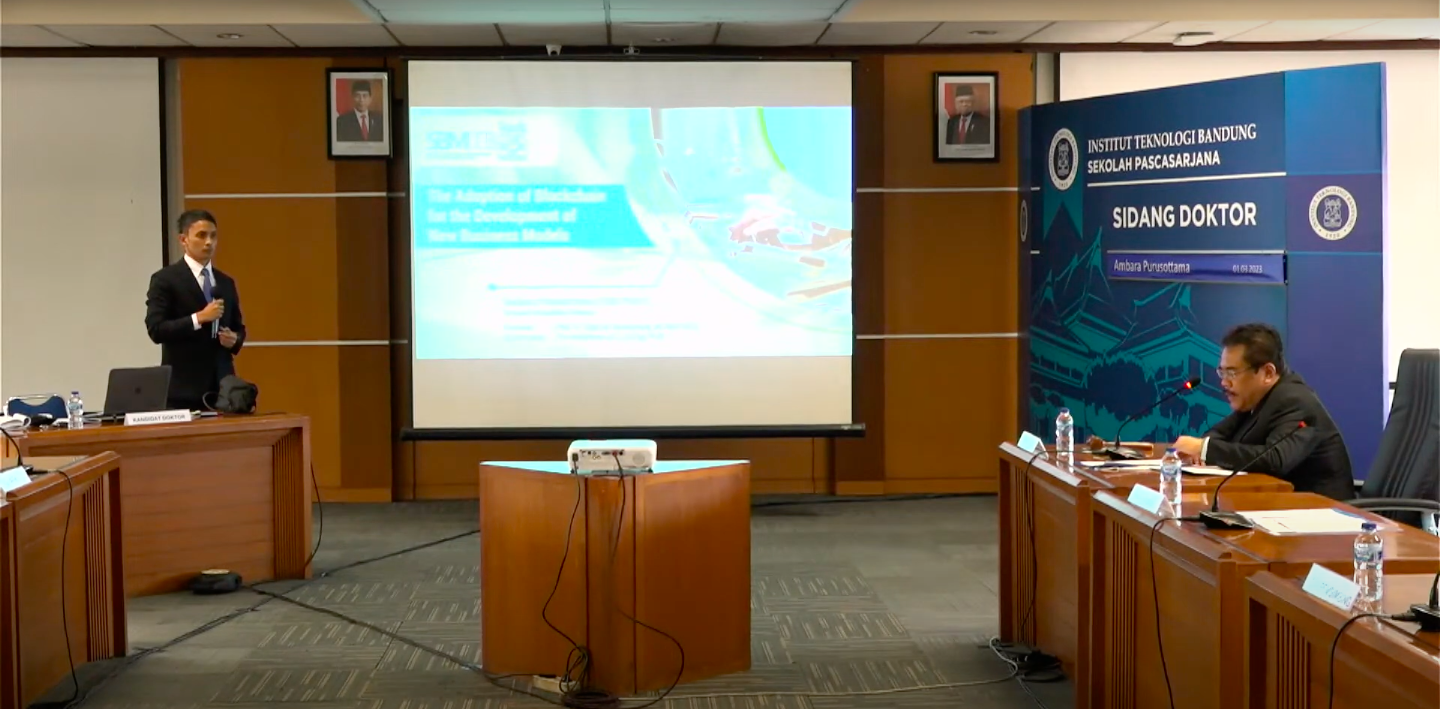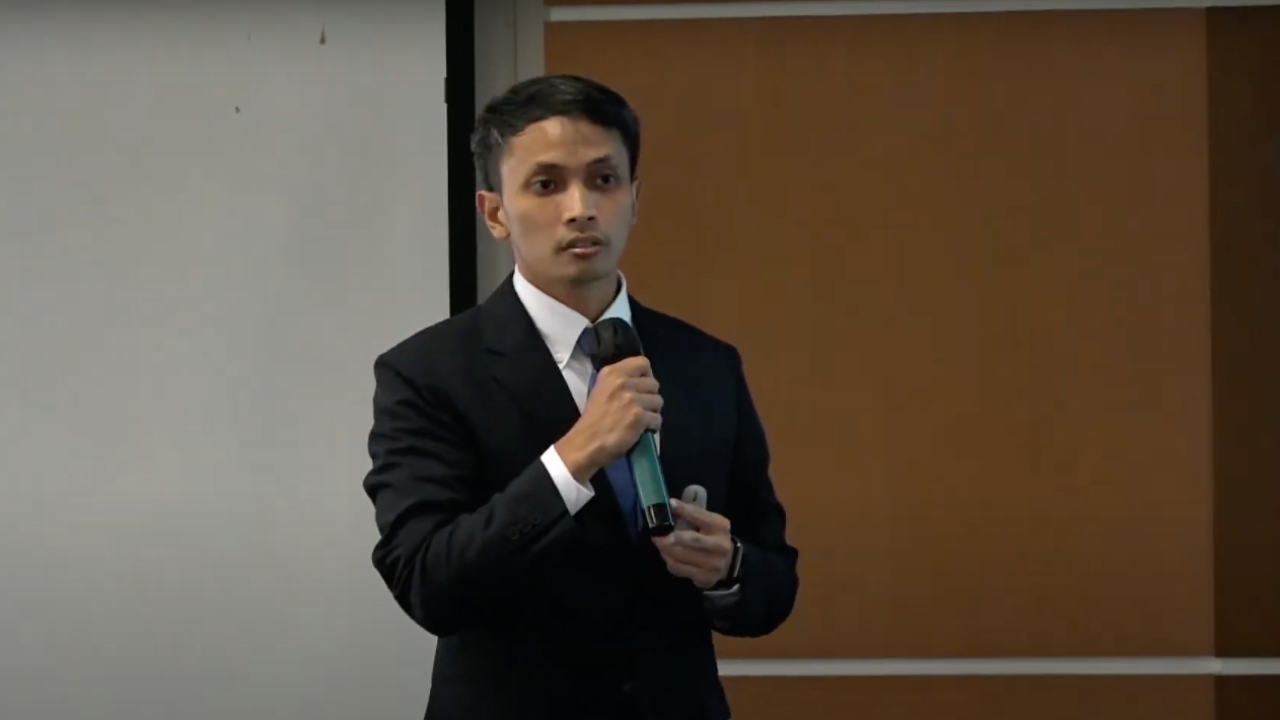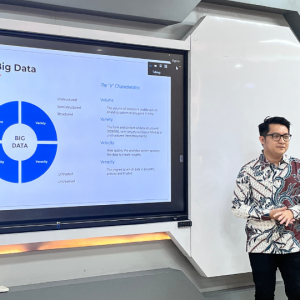Blockchain adalah mekanisme basis data canggih yang memungkinkan proses berbagi informasi secara transparan. Basis data blockchain menyimpan data dalam blok yang dihubungkan bersama dalam sebuah rantai.
Lantaran terhubung dalam sebuah rantai, data akan konsisten secara kronologis, karena pengguna tidak dapat menghapus atau mengubah rantai tanpa konsensus dari jaringan. Dampaknya, pengguna dapat menggunakan teknologi blockchain untuk membuat buku besar yang tidak dapat diubah.
Buku besar yang tak dapat diubah itu di antaranya dapat melacak pesanan, pembayaran, akun, dan transaksi lainnya. Sistem memiliki mekanisme bawaan yang mencegah entri transaksi yang tidak sah dan menciptakan konsistensi dalam tampilan bersama dari transaksi ini.

Ambara Purusottama menyampaikan penerapan blockchain dalam dunia bisnis itu saat sidang disertasinya yang berjudul “Adopsi Blockchain Untuk Pengembangan Model Bisnis Baru” di Bandung pada Rabu (1/3). Ambara berhasil mempertahankan disertasi tersebut dalam sidang Doktor Ilmu Manajemen Program Studi Manajemen Bisnis Institut Teknologi Bandung (SBM ITB). Tim promotor penelitian ini adalah Prof. Ir. Togar Mangihut Simatupang, M.Tech., Ph.D. dan ko-promotor Yos Sunitiyoso, S.T., M.Eng., Ph.D. Adapun pengujinya adalah Santi Novani, S.T., MT, Ph.D., Dr. Liane Okdinawati, S.T., MT dari SBM ITB, dan Prof. Ir. Sani Susanto, MT., Ph.D., CRMP, APU, AER dari Parahyangan Catholic University.
Ambara menjelaskan pentingnya penerapan teknologi blockchain dalam dunia bisnis. Blockchain untuk penggunaan buku besar bersama misalnya, tidak dapat diubah. Buku besar tersebut hanya dapat diakses oleh anggota dengan izin.
Anggota jaringan mengontrol informasi apa yang dapat dilihat oleh setiap organisasi atau tindakan apa yang dapat diambil masing-masing. Blockchain terkadang disebut sebagai jaringan “tanpa kepercayaan”. Bukan karena mitra bisnis tidak saling percaya, tetapi karena mereka tidak harus melakukannya.
Kepercayaan ini dibangun di atas keamanan blockchain yang ditingkatkan, transparansi yang lebih besar, dan ketertelusuran instan.
Dalam disertasinya, Ambara mengangkat tiga masalah. Pertama, meskipun diskusi akademik tentang blockchain semakin meningkat, namun tinjauan sistematis perlu dilakukan untuk membahas diskusi saat ini. Kedua, topik adopsi blockchain untuk inovasi model bisnis saat ini, berpotensi berbeda dalam pelaksanaannya. Oleh karena itu, penelitian ini bertujuan untuk mempromosikan pemahaman adopsi blockchain untuk business model inovation (BMI). Ketiga, studi ini juga menemukan bahwa pemahaman mengadopsi blockchain untuk BMI, banyak dilakukan dengan menggunakan pendekatan kerangka kerja statis, yang sulit dijelaskan interaksinya dalam sistem.
Penelitian Ambara juga telah terbit di Jurnal Manajemen Proses Bisnis–Scopus Q1– dengan judul “Spektrum Adopsi Blockchain untuk Mengembangkan Inovasi Model Bisnis”. Penelitian ini juga diterima untuk terpublikasi di International Journal of Innovation Science (Scopus Q2).





